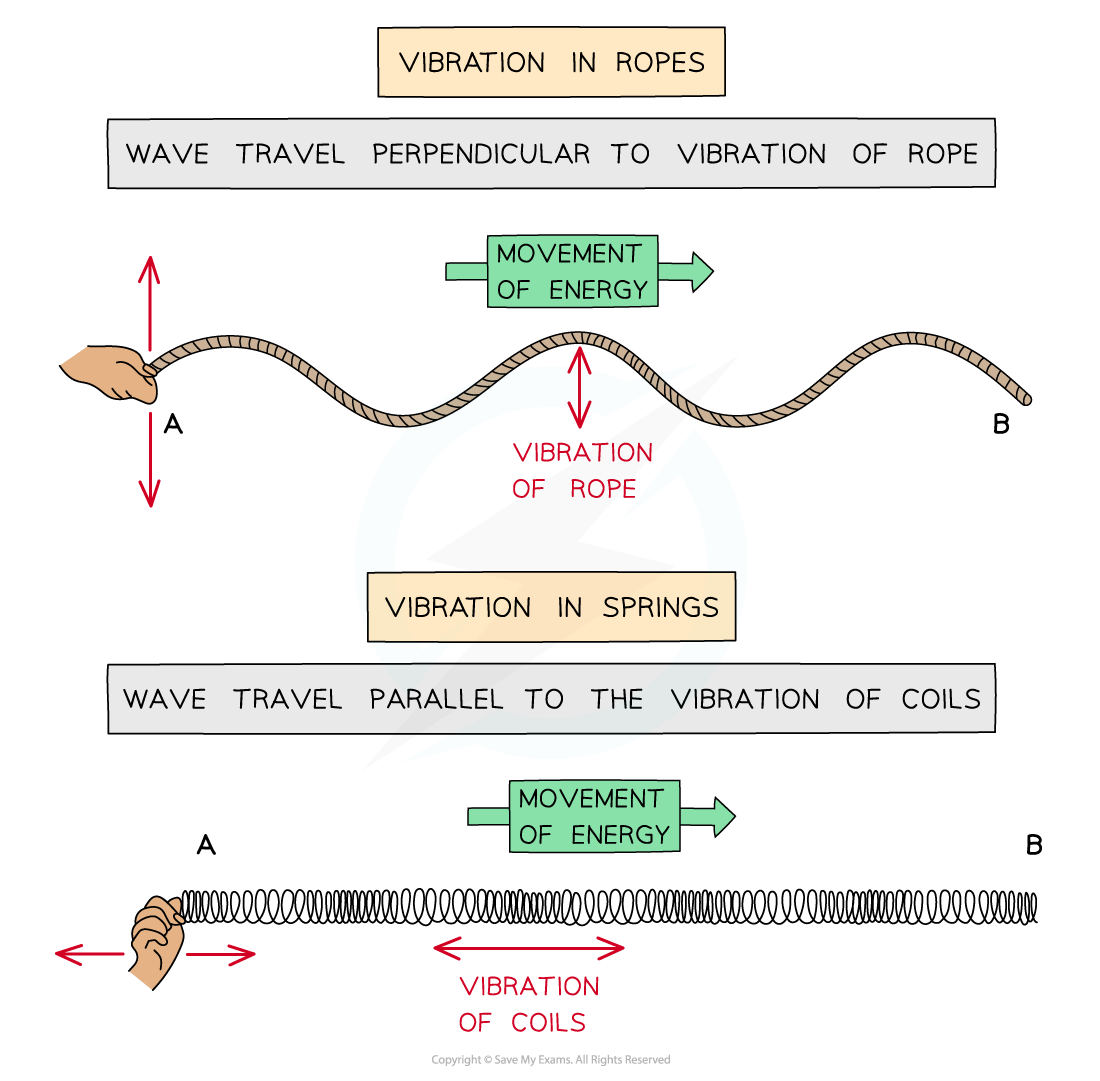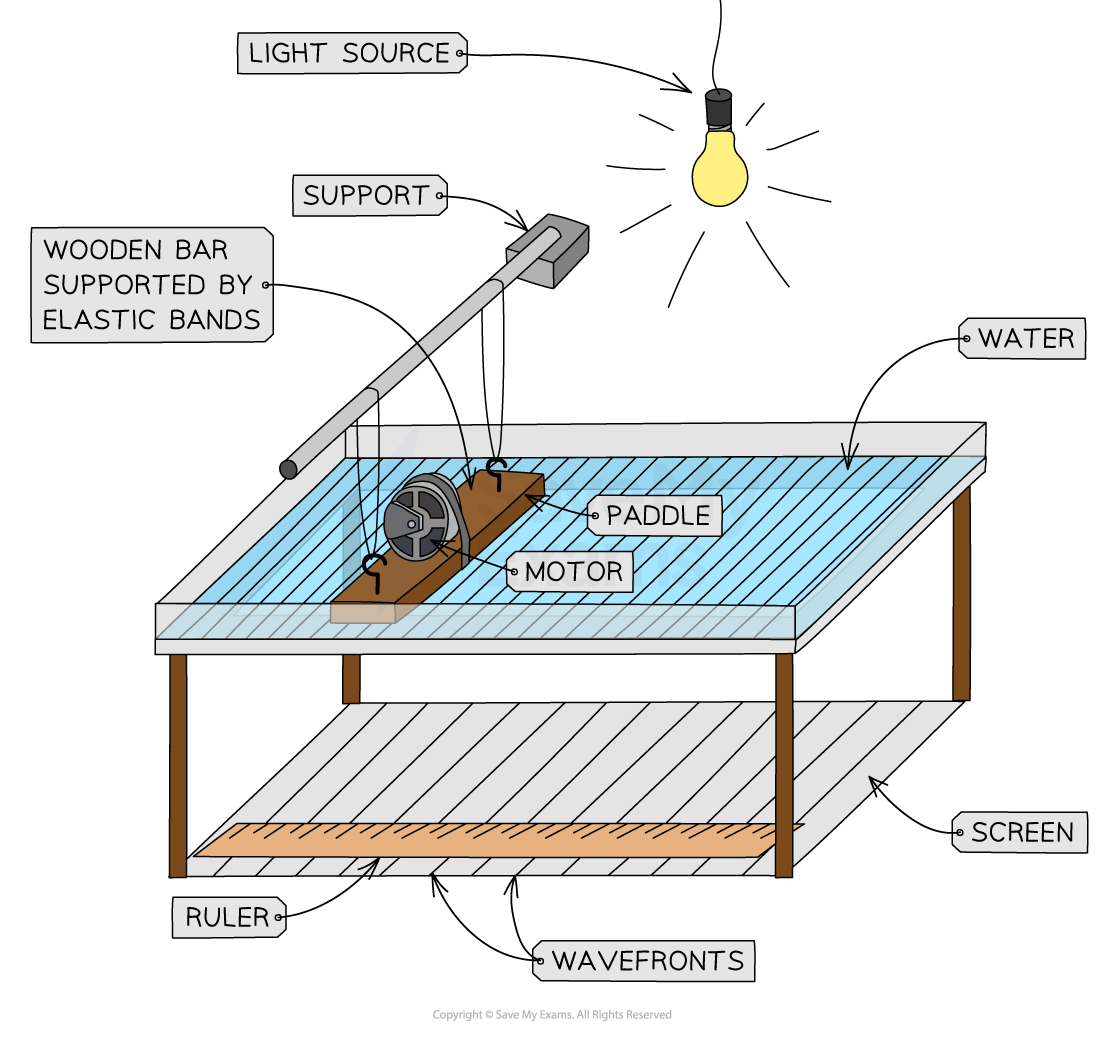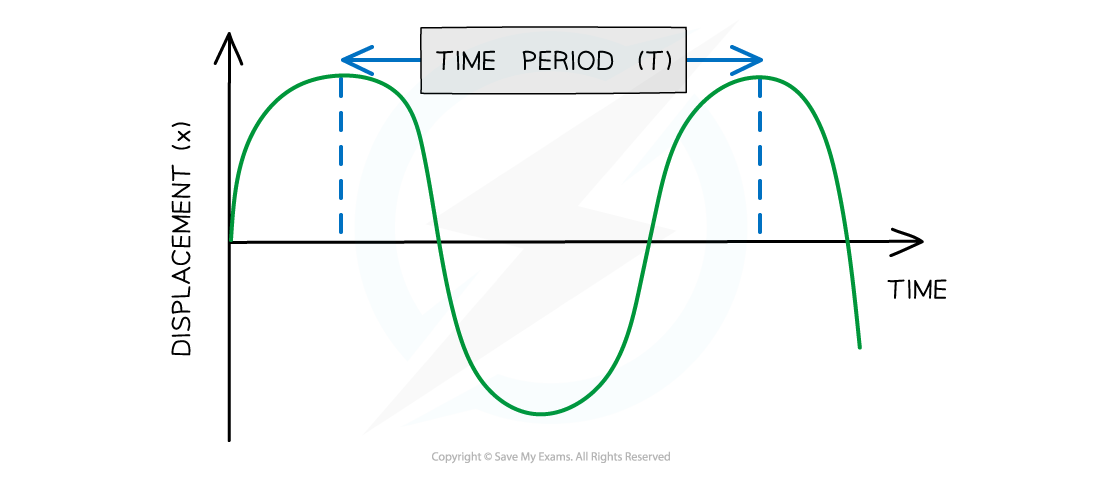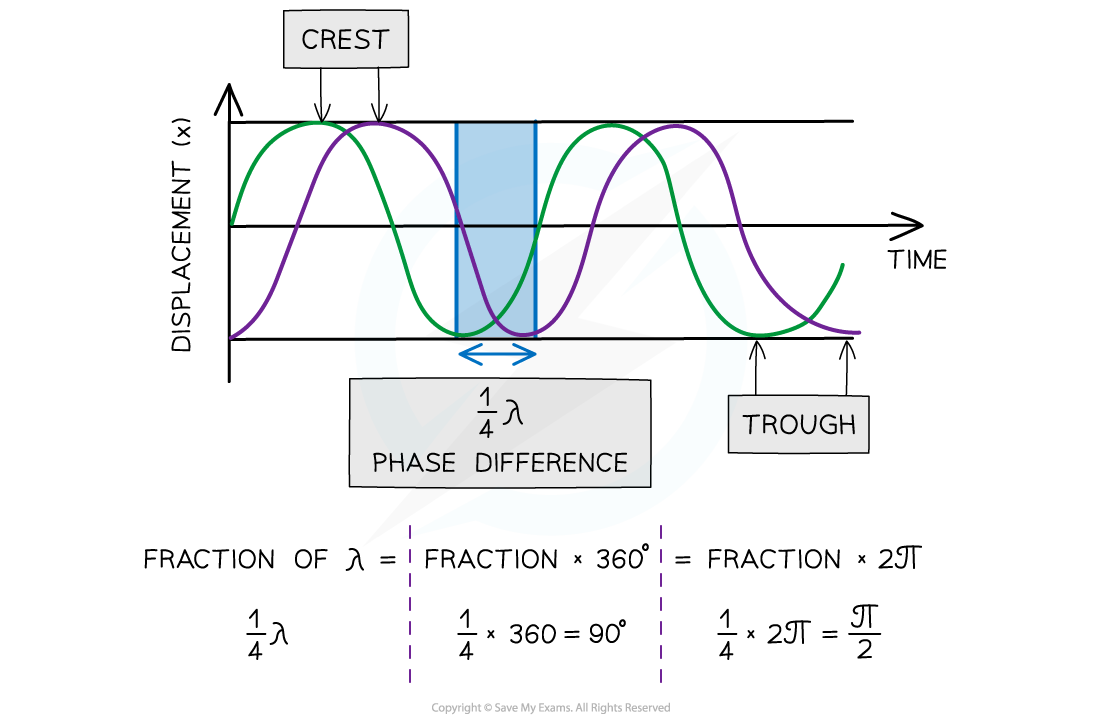Progressive Waves (Cambridge (CIE) AS Physics): Revision Note
Exam code: 9702
Wave motion
Progressive waves transfer energy without transferring matter; they move through a medium or the vacuum of space
This is opposed to standing waves which have no net energy transfer and oscillate with fixed nodes and antinodes
Energy is transferred through moving oscillations or vibrations.
These can be seen in vibrations of ropes or springs
Vibrations of ropes or springs

Waves can be shown through vibrations in ropes or springs
The oscillations / vibrations can be perpendicular or parallel to the direction of wave travel:
When they are perpendicular, they are transverse waves
When they are parallel, they are longitudinal waves
Ripple tanks
Ripple tanks may be used to demonstrate the wave properties of reflection, refraction and diffraction.
The paddle produces a combination of transverse and longitudinal waves
A ripple tank

Wave effects can be demonstrated using a ripple tank - the taller regions of water block more light, allowing the wavefronts to be seen using shadows
General wave properties
Displacement (x) of a wave is the distance from its equilibrium position. It is a vector quantity; it can be positive or negative
Amplitude (A) is the maximum displacement of a particle in the wave from its equilibrium position
Wavelength (λ) is the distance between points on successive oscillations of the wave that are in phase
These are all measured in metres (m)
Graph showing displacement of a wave against distance

Wavelength is the distance between two identical points on the wave and amplitude is maximum displacement from equilibrium position
Period (T) or time period, is the time taken for one complete oscillation or cycle of the wave
Measured in seconds (s)
Graph showing displacement of a wave against time

When the x axis is time, the separation between two identical points on the wave is the period of the wave, not the wavelength. Look out for the quantity on the x axis.
Frequency f is the number of complete oscillations per unit time
Measured in Hertz (Hz) or s-1
Where T is the time period of the oscillation, measured in seconds (s)
Speed v is the distance travelled by the wave per unit time
Measured in metres per second (m s-1)
Phase difference
The phase difference tells us how much a point or a wave is in front or behind another
When the crests or troughs are aligned, the waves are in phase
When the crest of one wave aligns with the trough of another, they are in antiphase
This can be found from the relative positions of the crests or troughs of two different waves of the same frequency
The diagram below shows that
the green wave leads the purple wave by ¼ λ
the purple wave is said to lag behind the green wave by ¼ λ
Displacement time graph shows phase difference

Two waves ¼ λ out of phase
Phase difference is measured in fractions of a wavelength, degrees or radians
The phase difference between two points is:
In phase is 360o or 2π radians
In anti-phase is 180o or π radians
Worked Example
Plane waves on the surface of water at a particular instant are represented by the diagram below.

The waves have a frequency of 2.5 Hz.
Determine:
(a) the amplitude
(b) the wavelength
(c) the phase difference between points A and B
Answer:
(a) Determine the amplitude:
Amplitude is the maximum displacement from equilibrium position:
(b) Determine the wavelength:
Recall that a wavelength is the distance between two identical points in a wave
From the diagram, 25 cm covers 3 full wavelengths and three quarters of the next wavelength
(c) Find the phase difference between A and B:
The distance between points A and B is half a wavelength
One wavelength is a phase difference of 360°
Half a wavelength is a phase difference of 180°
Examiner Tips and Tricks
When labelling the wavelength and time period on a diagram, make sure that your arrows go from the very top of a wave to the very top of the next one. If your arrow is too short or just near to the crest, you will lose marks. The same goes for labelling amplitude.
Wave energy
Waves that transfer energy are known as progressive waves
Progressive waves transfer energy between points, without transferring matter
When a progressive wave travels between two points, no matter actually travels with it
The points on the wave simply vibrate back and forth about fixed positions
Waves that do not transfer energy are known as stationary waves

Unlock more, it's free!
Did this page help you?